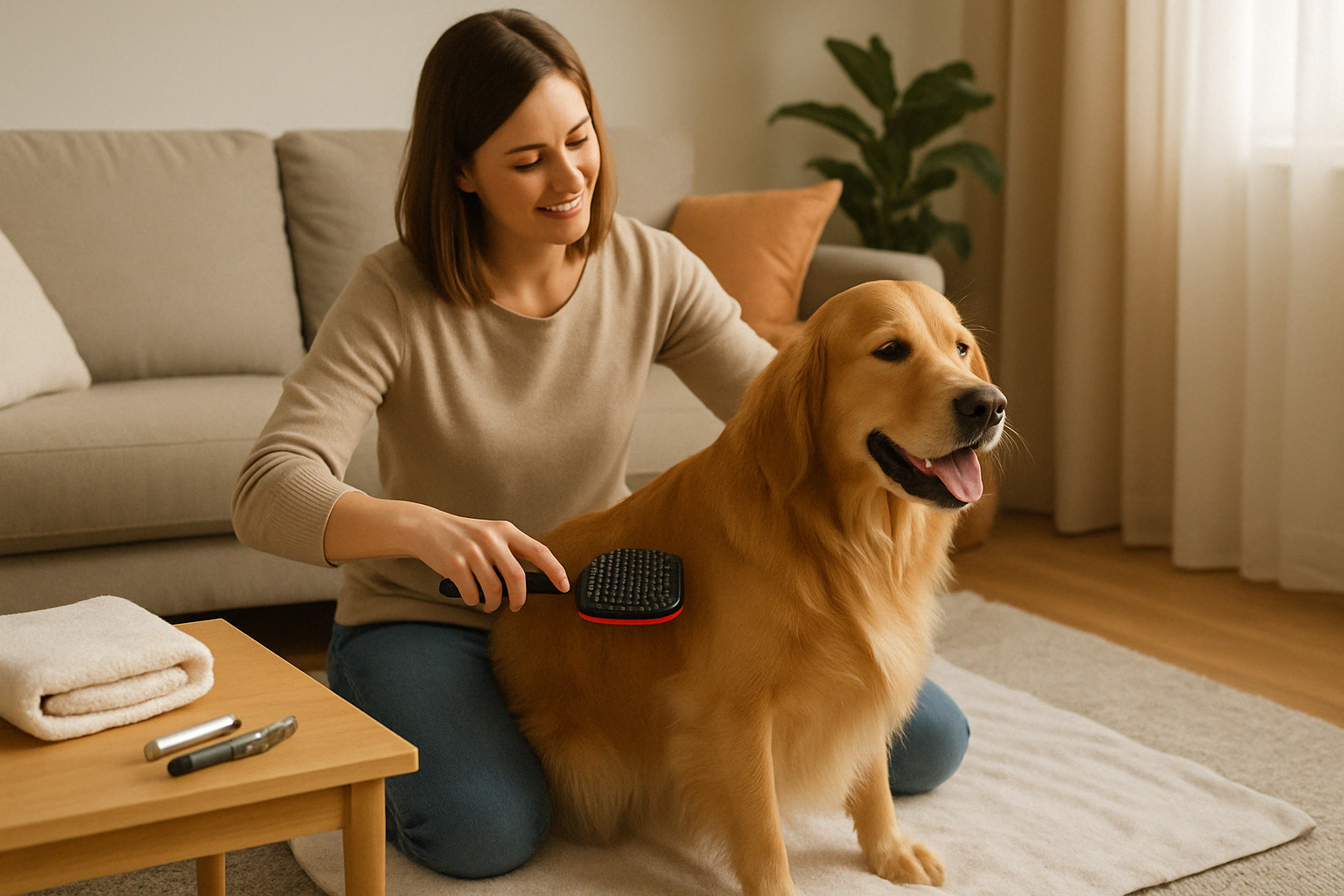Regular grooming is essential for your dog’s health and comfort. It helps maintain their coat, skin, nails, and overall well-being. While some dogs may require professional grooming, many can be cared for effectively at home with the right tools, techniques, and consistency.
This guide will walk you through the steps for grooming your dog at home, including brushing, bathing, nail trimming, ear cleaning, and more.
Why Grooming Matters
Grooming isn’t just about appearance. It helps with:
- Preventing skin infections and matting
- Detecting lumps, parasites, or wounds early
- Maintaining healthy nails and paw pads
- Supporting a clean, comfortable coat
- Strengthening the bond between you and your dog
Making grooming part of your routine helps your dog feel secure and healthy.
Brushing Your Dog’s Coat
The frequency and type of brushing depends on coat type:
Short-haired dogs (like Beagles, Boxers):
- Brush once or twice a week
- Use a rubber curry brush or bristle brush
Medium to long-haired dogs (like Golden Retrievers, Collies):
- Brush every 2–3 days
- Use a slicker brush and metal comb
- Detangle gently to avoid discomfort
Double-coated breeds (like Huskies, German Shepherds):
- Use an undercoat rake during shedding seasons
- Brush thoroughly to remove loose fur
Regular brushing reduces shedding, stimulates the skin, and prevents mats.
Bathing Your Dog
Bathing needs vary by breed, lifestyle, and coat type. In general:
- Bathe your dog every 4–6 weeks
- Use lukewarm water and dog-specific shampoo
- Avoid human shampoos — they can irritate the skin
- Rinse thoroughly and dry with a towel or blow dryer on low
Dry completely to prevent hot spots or skin issues. Don’t forget to praise your dog during and after the bath.
Nail Trimming
Trimming your dog’s nails helps prevent:
- Joint stress
- Painful splitting
- Posture problems
Trim every 3–4 weeks, or as needed. Tips:
- Use sharp dog nail clippers or a grinder
- Cut small amounts at a time to avoid the quick
- If unsure, ask a vet or groomer to demonstrate
- Use styptic powder if bleeding occurs
Listen for clicking sounds on the floor — that’s often a sign it’s time.
Ear Cleaning
Some dogs are more prone to ear infections, especially those with floppy ears or allergies.
- Check ears weekly for redness, odor, or debris
- Use a vet-approved ear cleaner
- Apply solution to a cotton ball and wipe gently
- Never insert cotton swabs deep into the ear canal
If your dog scratches at their ears frequently or shakes their head often, consult a vet.
Brushing Teeth
Dental hygiene is a key part of grooming:
- Brush teeth 2–3 times per week using dog toothpaste
- Use a finger brush or soft-bristled toothbrush
- Offer dental chews for additional support
- Monitor for bad breath, swollen gums, or tartar buildup
Dental disease can lead to pain, infections, and even organ issues — prevention matters.
Grooming Tools You’ll Need
- Slicker brush and comb
- Nail clippers or grinder
- Dog shampoo and conditioner
- Towels and non-slip mat
- Ear cleaning solution and cotton pads
- Toothbrush and dog toothpaste
- Clippers (for trimming, if applicable)
Create a grooming kit and store everything in one place for convenience.
Tips for a Successful Grooming Routine
- Start slow and reward calm behavior
- Use treats and positive reinforcement
- Keep sessions short at first
- Build trust before attempting sensitive tasks
- Stay patient — grooming takes practice for both of you
The more consistent you are, the more relaxed your dog will become over time.
When to Seek a Professional Groomer
Consider professional grooming if:
- Your dog has a high-maintenance coat
- You’re uncomfortable trimming nails or using clippers
- There are signs of skin conditions or parasites
- Your dog becomes anxious or aggressive during grooming
Many groomers also offer extras like deshedding treatments or anal gland expression, if needed.
Final Thoughts
Grooming your dog at home is a rewarding habit that improves health and deepens your bond. With the right tools and routine, it becomes a manageable and even enjoyable part of pet ownership. A clean, well-groomed dog is a happy dog — and it all starts with a few minutes of care and attention each week.

